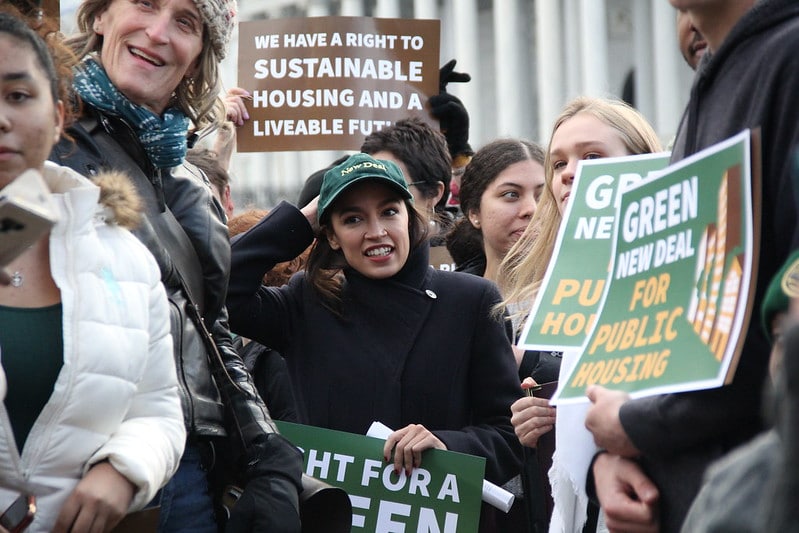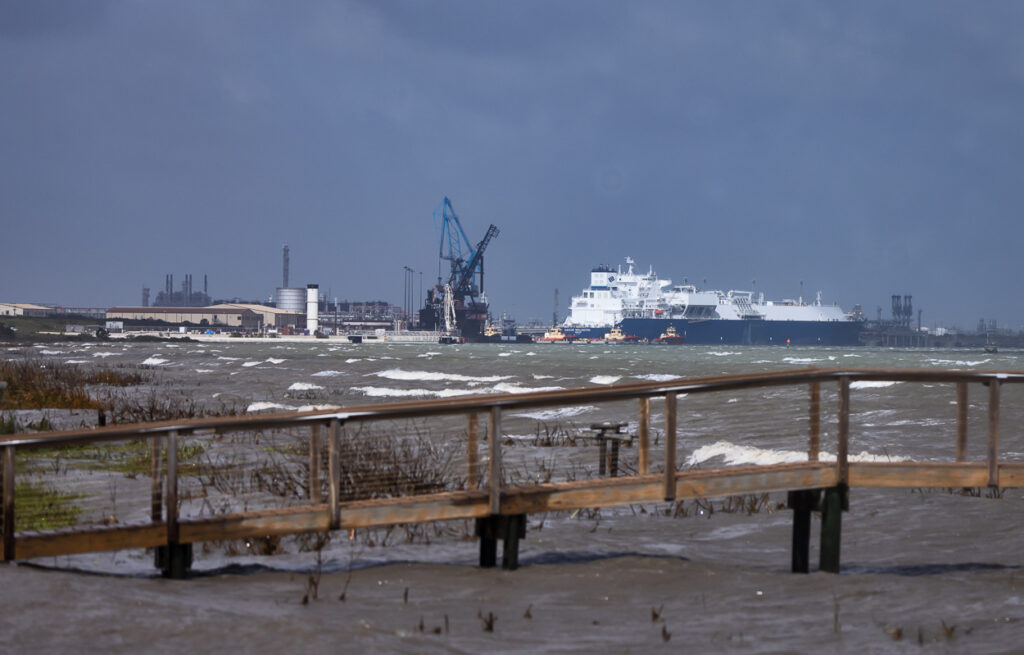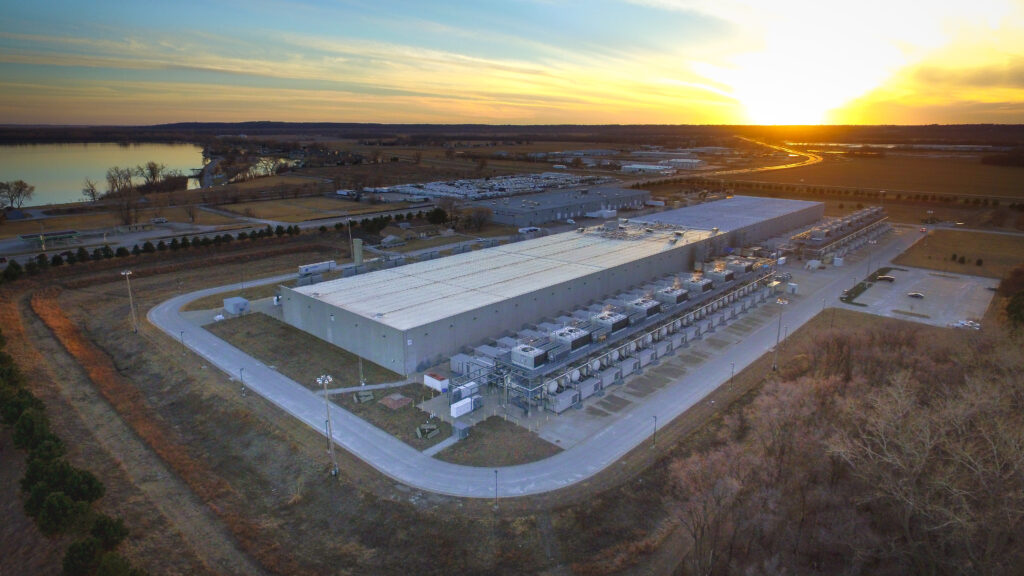Climate change has worsened global inequality, with poorer countries less able to withstand and adapt to climate change’s effects. It also has worsened inequality within countries between the rich and the poor: The impacts of drought, floods, hurricanes, and extreme heat are disproportionately felt by low-income communities and communities of color.
But new research suggests the reverse is also true: Not only is climate change contributing to greater inequality, but inequality is also fueling climate change. A new peer-reviewed paper by Fergus Green and Noel Healy, published in One Earth, analyzes the various ways in which inequality contributes to more greenhouse gas emissions while simultaneously making climate action even more difficult to pursue. The paper also asserts that climate policies that only focus on cutting greenhouse gas emissions, while ignoring inequality, will prove less effective at addressing the climate crisis compared to a much broader movement — like the Green New Deal — that attacks both inequality and climate change at the same time.
DeSmog spoke with one of the authors, Fergus Green, a lecturer in political theory and public policy at University College London, about the new research. The following conversation was edited for brevity and clarity.
Nick Cunningham: Let’s start off with some basics on climate change and inequality. We know that climate change contributes to worsening inequality, that much is not in dispute, right? How does it do that?
Fergus Green: As we see all over the world, climate-related disasters like bushfires and wildfires, droughts, flooding… those that are already vulnerable tend to be the worst hit. People who are poor don’t have access to adequate shelter, don’t have access to the mobility that they need to either avoid the worst impacts or move elsewhere afterwards. These shocks have a disproportionate impact on the worst off.
There are also these slow-onset events, particularly food and water related impacts, which also tend to disproportionately affect poor people because of their dependence on subsistence agriculture or their limited ability to purchase food. If there’s a food price shock, they’re the worst hit, and we’re seeing that at the moment. So, there are various kinds of channels in which climate events are particularly bad for the poor.
NC: And then the well-off can kind of insulate themselves.
FG: Yeah, to a degree, although there are limits to that. The better off you are, the better insulated you certainly are going to be for a lot of these effects in the near-term. And actually, more than that, what we see is that the very rich are able to often profit financially from shocks. This is something that Naomi Klein has written a lot about, this idea of the Shock Doctrine. Those whose assets are tied up in financial and productive assets, which is predominantly the global 1 percent, can take advantage of shocks to shift investments in areas that do well out of natural disasters. So, there’s some sense in which the very well-off do better, but that’s of course limited by the fact that they also have to live on the planet. Certainly, relative to the people at the bottom of the income distribution where the impacts will be the worst felt, it’s very clear that for various reasons climate change is worsening, and will increasingly worsen, inequality.
NC: OK. And your paper kind of turns that on its head, and you find that inequality is worsening climate change. Walk me through some of the basics. How does that work?
FG: Yeah, exactly right. In this paper we are trying to show that the causal arrow goes the other way as well, and therefore potentially could be a vicious cycle over the long run. What we try to do is synthesize a whole bunch of research from different fields — economics, geography, sociology — that speaks to the various ways existing inequalities are linked to greater emissions. The slogan we used to summarize those mechanisms is: consumption, production, obstruction, trepidation, and non-cooperation.
NC: I think the one that would not be surprising to people would be consumption, that idea that the wealthy consume more. But some of these others might be a little bit more surprising to people. For example, the notion that the fraying social fabric could worsen climate change was interesting. Basically, as people see their circumstances deteriorate, they become less trusting in public institutions and that obstructs climate policy. Is that right?
FG: Yeah, that’s the “non-cooperation” theme that we look at. In a way, I’d say the direct evidence for this is the most complicated, but there’s an underlying intuitive story that we piece together. There are two mechanisms here. First, the idea is that for any ambitious climate action it’s going to require the government to take actions that have a long time horizon. There’ll be costs to that and there’ll be benefits, but a lot of the costs come upfront. And then the benefits include both the global and diffuse climate benefits, and other benefits like reduced air pollution and [increased] jobs and innovation. Those benefits take place over the medium-term.
The problem here is that governments are going to require their citizens to trust them, to trust that their promises to tackle climate change are going to yield all these benefits. But in highly unequal societies you have this problem where citizens are often cynical about politics and government. Because of these inequalities, the rich are able to capture those government processes. So, inequality is linked to corruption. And that makes citizens cynical and therefore less likely to trust and authorize their governments to undertake these nation-building reforms.
The second mechanism is more about how citizens relate to one another. The term that’s used here in the literature is “social trust.” And we can sort of think about the trust between different groups and the solidarity between groups, and the willingness to compromise and make sacrifices for one another. Inequality reduces that social trust. The rich can live in gated communities and separate themselves from social and environmental ills. And we also know that the rich can use their control over media and communications to stoke divisions between everyone else. We see that particularly in the U.S. and other places with the role of Murdoch media and so on.
So, there are these various ways in which society becomes less trustful of one another. And if we think that climate change requires unprecedented cooperation, be it at the level of neighborhoods and community institutions, but also coming together in social movements to demand political change, then inequality is going to be a barrier to that collective action.
NC: And then as you mention, there’s sort of a vicious feedback loop because then the rich can sort of buy more political power and rig the system even more in their favor, which then sort of stokes even more mistrust. Is that right? So, the mechanisms sort of interact with each other.
FG: They certainly do. Exactly. And particularly so here. We have one section where we actually combined two of our five themes, “production” and “obstruction,” because they are so closely related. As you rightly point out, that’s also very closely connected to this last set of mechanisms around undermining the social fabric.
A lot has been written about [obstruction], the ability of corporations and wealthy investors… to use their power to create a favorable regulatory environment. And that’s not only obstructing, stopping, and weakening climate policies, but also ensuring large subsidies for fossil fuels and various other regulations that actively support more of the things that we don’t need, like coal mines and gas wells.
NC: The one that may be a little more common sense to people is that consumption category. How does that work? The wealthy accrue more wealth, then consume more? Is that the basic idea?
FG: Yeah. Exactly. As people’s incomes rise, they consume more goods, and that means they consume more energy. And energy, at least as currently configured, is carbon-intensive.
One thing to note is that in these studies, emissions in the supply chain are usually attributed to the end consumer as a kind of accounting move. This is obviously somewhat arbitrary, because producers also make decisions. So, we try to highlight the importance of consumption, but also widen the focus so we’re looking more upstream in the production process.
NC: In general, scientists and much of the climate movement, though not all, spent years narrowly focused on cutting greenhouse-gas emissions in what you call a “carbon-centric” approach to climate policy. And fighting inequality was kind of an entirely separate journey for other people to take on. Why do you think that approach is misguided?
FG: I think this would be a good time to mention the one category that we haven’t mentioned yet, which we call “trepidation.” The idea here is we’re shifting our focus now from the wealthy down to certainly those who are poor and low-income — but even to some extent the middle class — who are somewhat financially precarious or overstretched in various ways. What that means is a lot of people are afraid of [the effects of] climate change policy on their jobs or prices, like on fuel and electricity. It’s very easy for opponents of climate change policy to mobilize the boogeyman of increased costs, even when policies do include redistributive mechanisms. It’s often a very powerful attack.
NC: This is like the Yellow Vest movement in France, for example, when French President Emanuel Macron hiked fuel taxes in 2018 and it sparked mass protest?
FG: Exactly right. We’re not going to be able to enact carbon-centric climate policies if there’s this kind of backlash. And I think that this has really unfolded in the last few years, and not just in France with the gilets jaunes. We’ve seen this elsewhere in both the Global North and Global South.
This has, I think, made even the carbon centrists recognize that we can’t just tackle climate change on its own. We also need to think about redistributive aspects if we’re going to get any climate change mitigation policy at all. I think it was a bit of a wake-up call.
NC: A few years ago when Rep. Alexandria Ocasio-Cortez (D-NY) and Sen. Ed Markey (D-MA) introduced their Green New Deal framework, one of the criticisms, even from people who are interested in addressing climate change, was that it included all these ancillary proposals to address inequality that had nothing to do with climate change. It sounds like you’re suggesting that that was sort of the right approach all along?
FG: That’s right. And our study is explicitly framed to respond to this kind of critique… from what we call “Carbon Centrists,” those that think inequality and climate change are not causally related (or not significantly so). Or, they think that by trying to tackle these wider inequalities, we’ll just alienate moderates and centrists who we need in order to strike bargains to do anything on climate change at all.
What we try to do is synthesize the evidence that’s out there, and build up this picture that kind of comprehensively responds to that critique and says, “No, actually, these things are deeply intertwined through material processes and the political process. And we really have to address them together to make any sort of progress on either, and certainly on climate.”
NC: Let’s say that a large-scale Green New Deal program could be enacted. How would it attack inequality and climate change at the same time and address all these problems all at once? What kind of solutions are we talking about?
FG: That’s a good question. There have been a lot of proposals for Green New Deals from activist organizations, presidential candidates, and even some people who’ve been elected to office. What we’ve done is basically reviewed 29 Green New Deal proposals, mostly from the U.S. and Europe, but not entirely. We’ve grouped their various components and said they really fall into six different buckets. Some include more traditional carbon-centric climate policies, but three of them we think are really distinctive to Green New Deal policy programs. And it’s these three that we focus on as the basis for combating these mechanisms that link inequalities to climate change.
First is “sustainable social provisioning” policies. So, that’s about the state providing basic necessities to ensure that they are universally accessible, but also decarbonizing them at the same time. A key one here is housing, ensuring that people have access to housing, but not just any housing, efficient housing that’s not connected to gas.
The second bucket is financial security policies. This gets to the problem I mentioned earlier about people feeling insecure about their jobs or their purchasing power because of climate policies. We need to ensure that all people are financially secure. The Ocasio-Cortez-Markey Green New Deal emphasized a jobs guarantee. That’s one way of getting there. There are others.
The third bucket we call “reconfiguring power.” It’s not just about redistribution, it’s about changing the rules so that political power and economic power are more evenly spread throughout society. A key one here is shifting the balance between capital and labor through reforms in labor markets that are more pro-union. Also, reforms and processes that center racial, indigenous, and gender justice. That’s also about reconfiguring power.
NC: I was going to ask about the politics of all of this. As you mentioned earlier, often carbon-centric approaches sort of presume that we really need to keep this narrow in order to get moderates on board or even some conservatives. You’re saying, that’s not working.
FG: I think it’s fair to say a lot of carbon-centric approaches are sort of apolitical. They don’t really think through the political implications of these policies.
This idea that there’s this sort of bipartisan cooperation around climate change that might happen is both belied by the institutional setup of the United States, but also by recent experience, which suggests there’s not much of a center around which to cooperate.
A Green New Deal approach is predicated on incorporating transformative climate policy and a wider set of reforms that are intended to appeal to the vast majority, as well as progressive interest groups. The thought is if you can have a transformative vision and policy program that mobilizes votes on the left and left of center, you can get enough people to vote for that, and then implement that program in your own right. That’s the hope.
Now, it’s fair to say, even that’s very challenging in the current environment. There’s no doubt about that.
NC: I’m wondering if there are any places around the world that you see as being at the forefront of this?
FG: That’s a good question. I think it’s fair to say that so far there’s not very many that have been enacted. There are some things that have been sort of branded as Green New Deals. One we are studying at the moment is the case of Spain. You had a Socialist Party that came to power after the collapse of the Conservative government in 2018. They went to an election in April 2019, the [Socialist Party] platform included quite prominently a Green New Deal. We focused on an aspect of that that supported the transition of Spanish coal regions. We think they did that quite well. There are lessons to learn there, how to do a kind of Just Transition in fossil fuel regions.
Beyond that, I think what is really interesting is what is happening at a sub-national level in the U.S. We saw, for example, in Boston, Michelle Wu elected as Boston Mayor on a very prominent Green New Deal strategy there. So, that is sort of one of the few examples of someone who has been elected on a through-and-through Green New Deal strategy. Of course, recognizing that there are limits to what cities can do. But I think that’s a very fascinating example of where this kind of politics can be successful.
Subscribe to our newsletter
Stay up to date with DeSmog news and alerts






